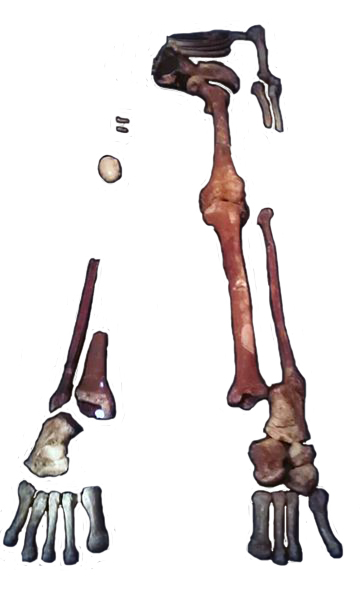
The Red Lady of Paviland is a fairly complete Upper Paleolithic-era human male skeleton dyed in red ochre. Discovered in 1823, at 33,000 years old it is one of the oldest ceremonial burials of a modern human discovered anywhere in Western Europe. The bones were discovered between 18 and 25 January 1823, by Rev. William Buckland during an archaeological dig at Goat's Hole Cave, one of the limestone caves between Port Eynon and Rhossili, on the Gower Peninsula, south Wales. Buckland believed the remains to be those of a female, dating to Roman Britain. However, later analysis of the remains showed them to have been of a young male, and the most recent re-calibrated radiocarbon dating in 2009 indicated that the skeleton can be dated to around 33,000 years before present (BP).
For more information, click here. Or, Try these sources:
- Callaway, Ewen (2 May 2012). "Archaeology: Date with history". Nature. 485 (7396). Can be read here.
- "Ancient skeleton was 'even older'". BBC News website. BBC. 30 October 2007. Can be read here.
- "Out of Africa: modern human origins special feature: isotopic evidence for the diets of European Neanderthals and early modern humans". Proc. Natl. Acad. Sci. U.S.A. 106 (38): 16034–9. September 2009. Can be read here.